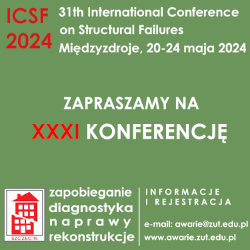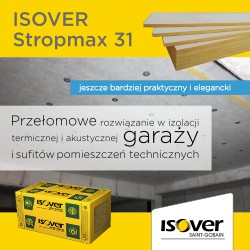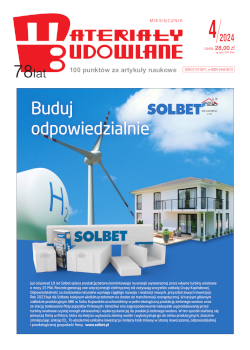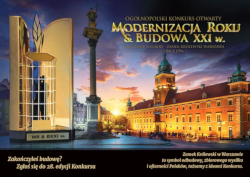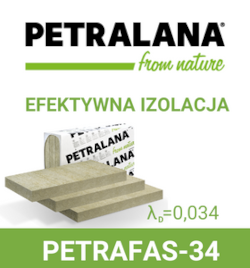dr inż. Dobrosława Kaczorek, Instytut Techniki Budowlanej, Zakład Fizykii Cieplnej, Akustyki i Środowiska
dr Barbara Pietruszka, Instytut Techniki Budowlanej, Zakład Fizykii Cieplnej, Akustyki i Środowiska
Autor do korespondencji e-mail: Ten adres pocztowy jest chroniony przed spamowaniem. Aby go zobaczyć, konieczne jest włączenie w przeglądarce obsługi JavaScript.
DOI: 10.15199/33.2017.08.10
W artykule przedstawiono wyniki z badań dotyczących tzw. buforowania wilgoci MBV (z ang. Moisture Buffer Value) przez przegrody, w których zastosowano higroskopijne biomateriały, powstałe na bazie surowców odnawialnych. Wszystkie z przebadanych konstrukcji ściennych, przy zmiennym obciążeniu wilgocią (50 – 80%), wykazały się „dobrą” klasą buforowania wilgoci w odniesieniu do skali zaproponowanej przez Rode [11]. Przedstawione wyniki potwierdzają, że na potencjał buforowania wilgoci przez poszczególne przegrody wpływ mają zastosowane w nich materiały, w szczególności skład surowcowy.
Słowa kluczowe: buforowanie wilgoci, materiały higroskopijne, badania wilgotnościowe.
* * *
Moisture buffering of innovative internal walls
In this paper, the results of Moisture Buffering Test (MBV) of the internal walls with a range of different internal and external layers, made from renewable, hygroscopic rowmaterials were presented. All of the investigated wall assemblies, with varying moisture loads in the range (50 – 80%), showed “good” moisture buffering value in relation to the buffer class proposed by Rode [11]. The presented results confirmed that the moisture buffer potential of the assemblies is influenced by used materials especially theirs material composition and structure.
Keywords: moisture buffering, hygroscopic materials, hygrothermal measurements.
Literatura
[1] Allinson David, Hall Matthew. 2010. ,,Hydrothermal analysis of stabilized rammed earth test building in the UK”. Energy and Building (42): 845 – 52.
[2] Association JS. JIS A 1470-1. Test Method of Adsorption /desorption Efficiency for Building Materials to Regulate an Indoor Humidity – Part 1: Response method of Humidity Japan. Japanese Standards Association, 2002.
[3] Collet Florence, Sylvie Pretot. 2012. ,,Experimental investigation of moisture buffering capacity of sprayed hemp concrete”. Constr. Build. Mater (36): 58 – 65.
[4] Hameury Stéphane. 2005. ,,Moisture buffering capacity of heavy timber structures directly exposed to an indoor climate: a numerical study”. Build. Environ (40): 1400 – 1412.
[5] IEA, 2007. International EnergyAgency, Energy Conservation Buildings and Community Systems ProgrammeAnnex 41, Whole Building Heat,Air and Moisture Response. http://www.ecbcs.org/annexes/annex41.htm.
[6] ISO 24353:2008 Hygrothermal Performance of Building Materials and Products – Determination of Moisture Adsorption/desorption Properties in Response to Humidity Variation, International Organization for Standardization, Switzerland
[7] Latif Eshra et al. 2015. ,,Moisture buffering potential of experimental wall assemblies incorporating formulated hemp-lime”. Building and Environment. (93): 199 – 209.
[8] Lstibrurek Joseph. 2002. ,,Moisture, building enclosures and mold”. HPAC Heat. Pip. Air Cond. Eng. (74): 77 – 80.
[9] McGregor Fiom et al. 2014. „Conditions affecting the moisture buffering measurement performed on compressed earth blocks”. Building and Environment. (75): 11 – 18.
[10] Rahim Mourad et al. 2015. ,,Characterization of flax lime and hemp lime concretes: hygric properties and moisture buffer capacity”. Energy Build. (88): 91 – 99.
[11] Rode Carsten et al. Editors. 2005. Moisture Buffering of building materials. Denmark. Technical University of Denmark.
[12] Roulet Cloud-Alain et al. 2004. Qualité de l′Environnement Intérieur dans les Bâtiments. Polytechnic Press And University of Romandes, Lausann.
[13] Toftum Jørn et al. 1998. „Upper limits of air humidity for preventing warmrespiratory discomfort”. EnergyBuild. (28): 15 – 23.
[14] Wołoszyn Monika et al. 2008. „Synthese sur la Modélisation Thermo-Hygro Aéraulique des Bâtiments dans l’Annexe de l’Agence Internationnale de l’Energie”. IBPSA. France.
[15] Zhang Huibo et al. 2012. ,, Assessing the moisture buffering performance of hygroscopic material by using experimental method”. Building and Enviroment. (48): 27 – 34.
Otrzymano: 22.06.2017 r.
Materiały Budowlane 8/2017, str. 35-37 (spis treści >>)










